Content
Gustav Robert Kirchhoff
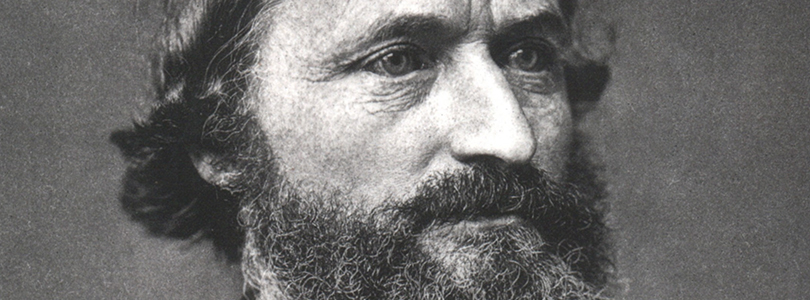
Solar gold and circuit laws
Gustav Robert Kirchhoff, who was born in Königsberg on 12 March 1824, may not be the best-known German physicist, but he is certainly one of the most influential. His laws and writings on electrical circuits are particularly influential. However, he is also regarded as the founder of theoretical physics as well as the father of spectral analysis, the radiation law named after him and the "black-body radiation".
Kirchhoff was a "high-flyer" at university, as one would say today: as a young student in Königsberg (now Kaliningrad), he formulated electrotechnical laws that were later named after him. They describe the relationships between currents, voltages and resistances in branched circuits. One of his professors was the mathematician Friedrich Julius Richelot, whose daughter Clara he later married. Kirchhoff received his doctorate from the Albertus University in 1847. He moved to Berlin and habilitated there just one year later.
In 1850, he received his first appointment as an associate professor in Breslau, where he taught experimental physics. It was there that he had a decisive encounter: he met Robert Wilhelm Bunsen (even those who don't have much to do with the natural sciences will probably at least remember the Bunsen burner from chemistry lessons...). This was the beginning of a lifelong friendship and an extremely fruitful working relationship.
Physics "dream team"
When Bunsen was appointed to Heidelberg, he ensured that Kirchhoff was also offered a professorship there. Kirchhoff lived and worked in Heidelberg for 21 years. It was during this time that he achieved his greatest scientific successes. He became one of the most important physicists of his time; his lectures on experimental and theoretical physics were famous and well attended. Kirchhoff became a member of almost every important scientific society in Europe.
Bunsen and Kirchhoff researched the emission and absorption of light in the Heidelberg city palace "Haus zum Riesen". Bunsen tried to use various salts to colour flames differently and thus identify elements. Kirchhoff suggested analysing light spectrally. Initially using a makeshift device consisting of two telescopes and a rotating prism, they succeeded in proving that luminous substances can be identified by means of the spectral lines they emit.
Caesium from mineral water
This spectral analysis was to immortalise both of them. In 1859, Kirchhoff established his laws of radiation, which became particularly important in astronomy. The scientific foundations of spectral analysis were published jointly by the two in 1860 ("Chemical Analysis by Spectral Observations").
Within a very short time, other chemists discovered ten new elements by applying spectral analysis. Bunsen and Kirchhoff identified caesium (1860) and rubidium (1861). They found both when analysing the mineral water from the "Maxquelle" spring in Bad Dürkheim.
Gold from the sun
They soon replaced their makeshift spectral apparatus with a large Fraunhofer flint glass prism, which they received from Munich. The study of the "Fraunhofer lines" led to further insights: The correspondence between the wavelengths of the Fraunhofer lines and emission lines of known chemical elements made it possible to analyse the matter of the celestial bodies. Spectral observation proved that the stars consist of the same elements as the earth. Kirchhoff also analysed the spectrum of the sun: he recognised that the sun is a liquid fireball with a solidly glowing core.
"Look, I've managed to get gold from the sun," Kirchhoff is said to have said to his banker, waving his Rumford Medal, which he had received along with lavish prize money for analysing the solar spectrum. The banker had previously doubted that it would be profitable to research gold on the Sun.
Black bodies and quanta
Kirchhoff is one of the founders of astrophysics. Alongside the telescope, the spectrometer became the most important instrument. Spectral analysis developed into the basis of atomic and molecular theory and ultimately also of quantum physics. Kirchhoff endeavoured to find the emission curve of the "black body" he had defined as a function of wavelength and temperature. This direction of development ultimately led to Planck's quantum hypothesis. Kirchhoff is therefore one of its pioneers.
But Kirchhoff was also active in the fields of electricity, elasticity, heat theory, heat conduction and acoustics. In fact, there was hardly a field of classical physics to which he did not contribute. He worked on long-distance electrodynamics, established a "telegraph equation", which assumes the propagation of electric waves at the speed of light, and created a theory of electrical oscillations. In 1877, he researched the equations of motion in telegraph cables, which scientifically underpinned the global expansion of underground or submarine cable networks.
When he was no longer able to carry out experiments due to health problems, he devoted himself to theoretical physics and in 1874 accepted the call to Berlin, which he had previously turned down several times. However, he found it increasingly difficult physically to give his popular lectures there. Finally, he had to retire from teaching and died in Berlin on 17 October 1887 after a long illness.
Text: Dr. Jan Björn Potthast; Pictures: Public domain via Wikimedia Commons, Poul la Cour und Jacob Appel, Public domain via Wikimedia Commons, CC by SA 4.0 via Wikimedia Commons, DEPATISnet
Last updated: 16 January 2026

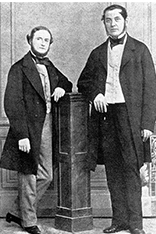
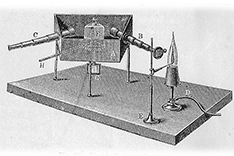
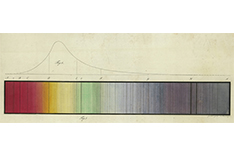
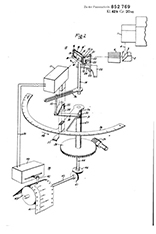
Not only protecting innovations
Social Media